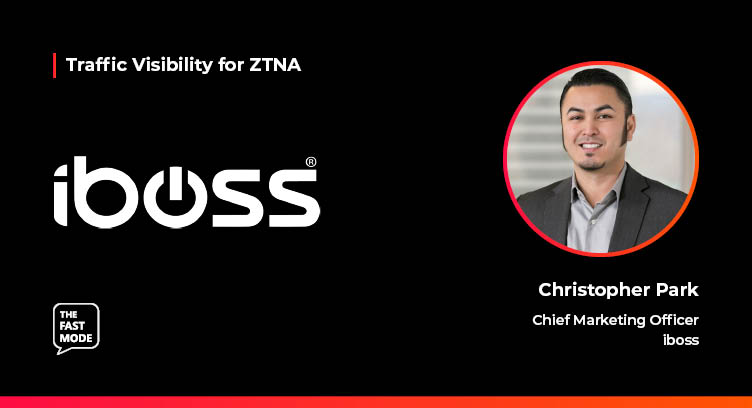The Fast Mode spoke to Christopher Park, Chief Marketing Officer at iboss on the impact of traffic visibility on ZTNA networks. Christopher joins us in a series of discussions with leading cybersecurity and networking vendors, assessing the evolution of ZTNA technologies, the roadmap for ZTNA deployments, the benefits of ZTNA for enterprise and telco networks, and the need for real-time traffic visibility technologies such as DPI for ZTNA.
Ariana: Why is ZTNA the future of enterprise security?
Christopher: In the typical enterprise, users need to access vital information that is stored in the cloud and often use a VPN for access. Inadvertently however, VPNs often grant a user access to the entire network, meaning if a threat actor compromised a user’s identity, they could access a company’s environment. This is just one example, but it is indicative of why Zero Trust Network Access is the future of the industry. ZTNA connects users to a security fabric that provides access only to specific resources and applications - not the full network. It also includes a number of features like access control, which can inspect each request to access resources and ensure only authorized users are connected. This creates a much more secure environment through granular access controls, helping to prevent a threat actor from accessing an entire network. Additionally, ZTNA helps increase performance by eliminating the need for devices like slow and overloaded VPNs.
Past models have relied on legacy technologies like VPNs, VDIs and on-premise proxies that played a crucial role in helping companies connect users and data over the internet. However, they often came with sacrificing performance for security. At iboss, we offer a ZTNA solution that helps enterprises remove legacy technologies, while providing better security. For example, iboss eliminates the need for slow and overloaded VPN connections and instead sends traffic directly from the users to the necessary resources or applications. By focusing on simultaneously improving security and productivity, ZTNA is helping improve enterprise security so we can protect important resources and applications without sacrificing performance.
Ariana: Why is cloud a key component of ZTNA?
Christopher: The future of the industry is the cloud. In today’s environment, users are no longer restrained to the four walls of an office and are accessing applications and information around the world via the cloud. At the same time, organizations are continuing to accelerate their move toward the cloud and increase their digital transformation efforts. This creates an issue for organizations that are still relying on legacy on-premise devices for the security of their cloud resources. Workforces are growing increasingly distributed, and both enterprises and employees need access to resources from wherever they are. The era of on-premise security devices is over.
The cloud is the best way to deliver protection and security to organizations and workforces. A cloud-based platform, with a focus on following users instead of perimeters, helps ensure that Internet access is always secure, regardless of where they are trying to access. This means compliance, malware defense and data loss prevention are always applied as users when they connect to the cloud. In addition, since security lives in the cloud, it can scale elastically to provide the capacity needed to process an ever-increasing amount of bandwidth and connectivity.
Christopher Park is Chief Marketing Officer at iboss.
This interview is a part of The Fast Mode's Next-Gen DPI Traffic Visibility for ZTNA segment, featuring over 40 leading cybersecurity and networking solution providers and their views on the importance of traffic visibility for ZTNA. A research report on this topic will be published in January 2024 - for more information, visit here.


















